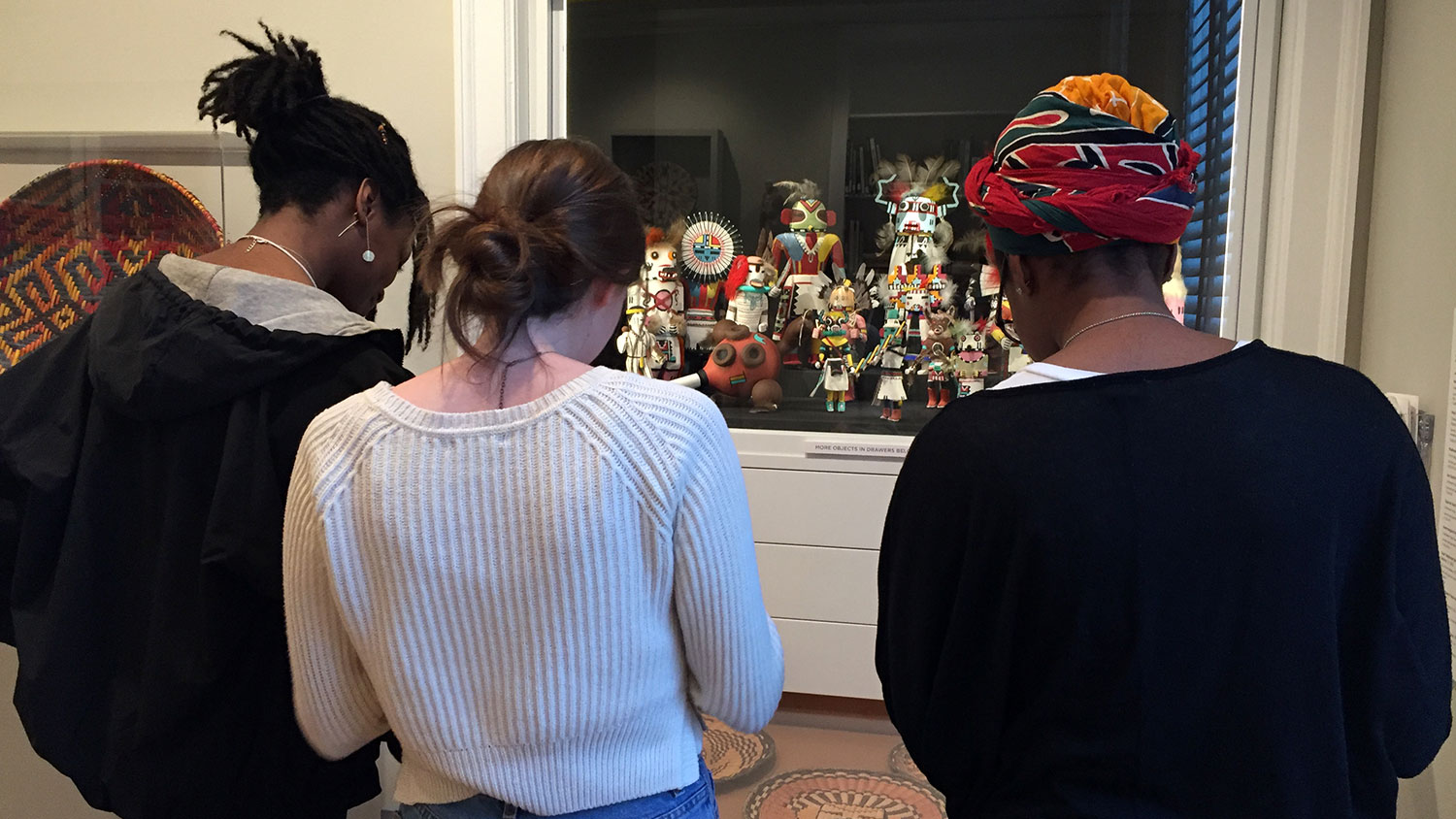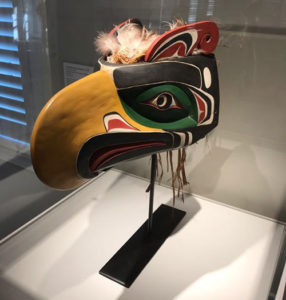
Now through April 29, 2018 in the Thomas E. Cabaniss Gallery on the first floor of the Gregg Museum of Art & Design, “Treasures of Native America” features a rotating display of Native American art donated from the Greenberg Collection.
 Free and open to the NC State community and public, the Gregg Museum of Art & Design is located near the NC State Belltower across Pullen Road at 1903 Hillsborough Street. With a mission to inspire creativity, innovation and the expression of ideas, the museum is home to over 35,000 objects, including textiles, garments, ceramics, paintings, photography, sculpture, architectural drawings, archaeological artifacts, ethnographic materials and modern furniture. The museum is named after John and Nancy Gregg, “who committed themselves fully to the realization of collecting and exhibiting art and design museum on NC State’s campus,” according to museum materials.
Free and open to the NC State community and public, the Gregg Museum of Art & Design is located near the NC State Belltower across Pullen Road at 1903 Hillsborough Street. With a mission to inspire creativity, innovation and the expression of ideas, the museum is home to over 35,000 objects, including textiles, garments, ceramics, paintings, photography, sculpture, architectural drawings, archaeological artifacts, ethnographic materials and modern furniture. The museum is named after John and Nancy Gregg, “who committed themselves fully to the realization of collecting and exhibiting art and design museum on NC State’s campus,” according to museum materials.
On display in the first floor galleries, Treasures of Native America includes silver and turquoise jewelry, Navajo weavings, Hopi katsinam, Apache basketry, Pueblo pottery and Northwest Coast masks.
Navajo weavings include saddle blankets, rugs and wall hangings of rich reds, blacks and grays. The intricate, hand-woven designs depict figures, storm patterns and other significant aspects of southwestern Native American culture.
 Hopi katsinam, religious dolls known as “spirit messengers,” are displayed in a wall case above special display drawers of silver and turquoise jewelry and are made of various woods and feathers portraying the religion’s deities.
Hopi katsinam, religious dolls known as “spirit messengers,” are displayed in a wall case above special display drawers of silver and turquoise jewelry and are made of various woods and feathers portraying the religion’s deities.
Other tribes represented through art include Pima, Papago, Zuni and Tohono O’odham, among others.
Drs. Norman and Gilda Greenberg began donating Native American art objects in 2009. In 2010, the Gregg established the permanent “Drs. Norman and Gilda Greenberg Native American Art Study Center.” The only center of its kind in the state of North Carolina, the center includes hundreds of artifacts and thousands of anthropological slides, books, files and other research materials.
- Learn more about the Treasures of Native America exhibit and the Gregg Museum.
Austin Butler is a communications intern in the Office for Institutional Equity and Diversity. She is a senior majoring in science, technology and society.